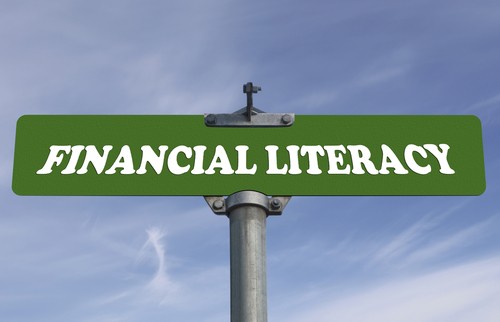10 Reasons Why Schools Should Be Teaching Financial Literacy To Our Kids
Post on: 20 Май, 2015 No Comment

by Kelly Walsh on April 24, 2011
Thanks to guest writer Krisca C. Te for working with me to develop this feature post on the importance of financial literacy education for our high school and college students.
In the past, a teacher telling kids how to spend their allowance money might be promptly put in her place by the PTA. Money matters were personal, and to be kept within the family. With the increasingly difficult financial conditions bought on by recession and other fiscal challenges in the US and abroad, it would be a great time for schools to help to give our kids a fighting chance. In recent years, many academics have pushed for the introduction of financial literacy into the school curriculum.
The need to educate our kids about money is simply greater than ever. Here’s 10 reasons why.
- They don’t know enough. Studies by the Jumpstart Coalition for Personal Financial Literacy and the National Longitudinal Survey of Youth have shown that many young people have little understanding of finance and economics. They are spending and borrowing without knowing that interest builds up, or that credit cards aren’t free money.
- They are starting younger. The weekly-allowance system is used in many families. Five dollars for the candy store may not seem so bad, but pre-teens stretching $25 over one week will need a bit more guidance.
- There are greater temptations. A few minutes on the Internet and a kid can find more than a few toys or CDs to ask for. When they’re old enough to buy, online shopping makes it a little too easy. It’s more important than ever to tell them the value of saving and delayed gratification early on.
- They have more debt options. A report by the Federal Reserve showed that 53,000 student credit card accounts were opened in 2008, and by 2009 there were some 2 million student credit cards in circulation. Agreements between banks and colleges have made it easy for students to get debt— more students are paying tuition with credit cards every year in addition to charging schoolbooks and other expenses.
- They have more debt in general. Many college students between 18 and 25 have at least one credit card. By the time they graduate, half of them have four or more, with an average balance of over $3,000. That means they learn to take out more credit in the four or so years that they’re in college. If a financial literacy program is implemented in high schools and colleges, they could graduate with less debt.
- Student loans are costlier. In 2011, student loans accounted for a greater slice of the debt pie than credit cards for the first time in the U.S. While the costs of education have grown, incomes and government aid aren’t keeping up. Students are taking on more debt, and with banks tightening their belts, many of them are turning to riskier subprime lenders.
- People are going bankrupt younger. Bankruptcy doesn’t discriminate: in 2001, almost one in five Americans from age 18 to 24 declared bankruptcy, according to USA Today. The same age bracket is the fastest growing demographic in bankruptcy cases. Most bankruptcies are the result of accumulated debt, so people as young as 15 may already be on the road to bankruptcy.
- They start saving later. More kids are taking their time in school and starting their careers—and retirement plans—later than their parents. It’s not uncommon for a student to start a stable career only in his 30s. If they learn the importance of saving and investing in high school or college, it will encourage them to get started earlier, and to work harder to avoid taking their time in college. This is more important then ever because…
- The government won’t always have their backs. With the retirement boom looming, it’s a highly likley that the next generation of retirees won’t enjoy the same benefits as their parents did from the government. More than ever, young people today are going to have to save more and invest wisely if they want a comfortable retirement some day.
- Not everyone is given the same chance. The Jumpstart Coalition surveys showed that the most financially literate youngsters are mostly white, male, and come from well-educated families. A separate study by the NLSY showed that financially literate young adults have parents with ample retirement savings, often invested in stocks. The data suggests that financial literacy is concentrated in the middle and upper classes, but everyone is faced with the same financial decisions. Teaching all kids in schools helps to ensure that all kids are on the same footing when it comes to handling their own money.
These resources provide support for, and excellent reading on, many of the above issues:
What do you think? This is by no means an all-inclusive listing of reasons why we must work to offer financial literacy education in our schools. If you have additional thoughts that should be added here, please comment and share them!
Krisca C. Te is part of the team that manages Australian Credit Cards. a complimentary student credit card comparison service based in Sydney, Australia. Before she joined ACC, she was an Associate in Deutsche Bank Group under Market and Instruments Control Services.
Related Posts (if the above topic is of interest, you might want to check these out):














